Some people see all the fallen leaves from their deciduous trees as a nuisance. All that leaf litter adds a list of chores they have to check off the list: sweeping their decks and patios, raking their lawns so the leaves don’t smother the grass, bagging them up and sending them to the landfill. My take?
I see autumn leaves as a free and easy way to improve my soil over winter, and a few years ago, I actually “rescued” other people’s leaves from the landfill by picking up 300 bags of fall leaves all over town so I could use them in my own garden! (I am also that crazy person who invited a stranger to dump a trailer load of his leaves in my yard. I’m not sure who was happier about that!)

Compost and mulch have incredible benefits for the soil, and fall leaves are a gold mine because they can serve as a soil conditioner, compost, and mulch. They’re an abundant source of organic matter, which feeds earthworms and keeps the soil food web healthy, and they also improve soil tilth by increasing drainage in sandy soil or aerating heavy clay soil.
Different leaves have different nutrient profiles, but one chemical analysis of municipal leaves collected across New Jersey found them to contain all the essential nutrients (nitrogen, phosphorus, and potassium) as well as many trace minerals (including calcium, magnesium, and sulfur). While leaves are not (on their own) a complete fertilizer, they’re an effective soil amendment that’s freely available.
And it’s easy to repurpose leaf litter around the yard to reduce waste and benefit your soil and other plants!
Here are five ways to put them to use in your garden:
1. Add leaves to your compost pile.
If you sometimes struggle to find enough materials to build up your compost, fall is the perfect time to change that! The season produces a lot of fall leaves and other yard waste that quickly piles up.
You can layer dried leaves (known as “browns,” as they’re higher in carbon) with fresh weeds, grass clippings, and the last of your summer crops (known as “greens,” as they’re higher in nitrogen) in a 1:2 ratio of brown to green.
2. Stockpile leaves as brown matter for your compost pile.
Do you have a ton of leaves that would just overwhelm your compost piles? Don’t toss them—save them! You can store excess fall leaves in sturdy yard bags or lidded trash cans. Every time you empty your kitchen compost bucket into the outdoor compost pile, add a few handfuls of leaves as well.
In winter, the amount of kitchen waste we produce usually outpaces the amount of brown material we can collect. I find that I always need more carbon materials in winter since fruit and vegetable scraps are generally higher sources of nitrogen. When most of my “greens” come from the kitchen instead of the yard, I go with a brown to green ratio of 1:1 (up to 3:1, depending on the scraps).
Disclosure: If you shop from my article or make a purchase through one of my links, I may receive commissions on some of the products I recommend.
3. Use leaves as winter mulch for overwintering crops and perennials.
Mulch reduces soil erosion; insulates roots and crowns from cold, dry air; and helps keep weeds at bay. And it just so happens that all those leaves make an excellent protective mulch for overwintering crops and perennials, including garlic, asparagus, rhubarb, cold-hardy herbs, shrubs, and trees.
You can mix dried leaves with other materials, like straw or pine needles, to create an airier mulch. As the leaves and other organic matter break down, they release nutrients into the soil that give overwintered plants a boost in spring.
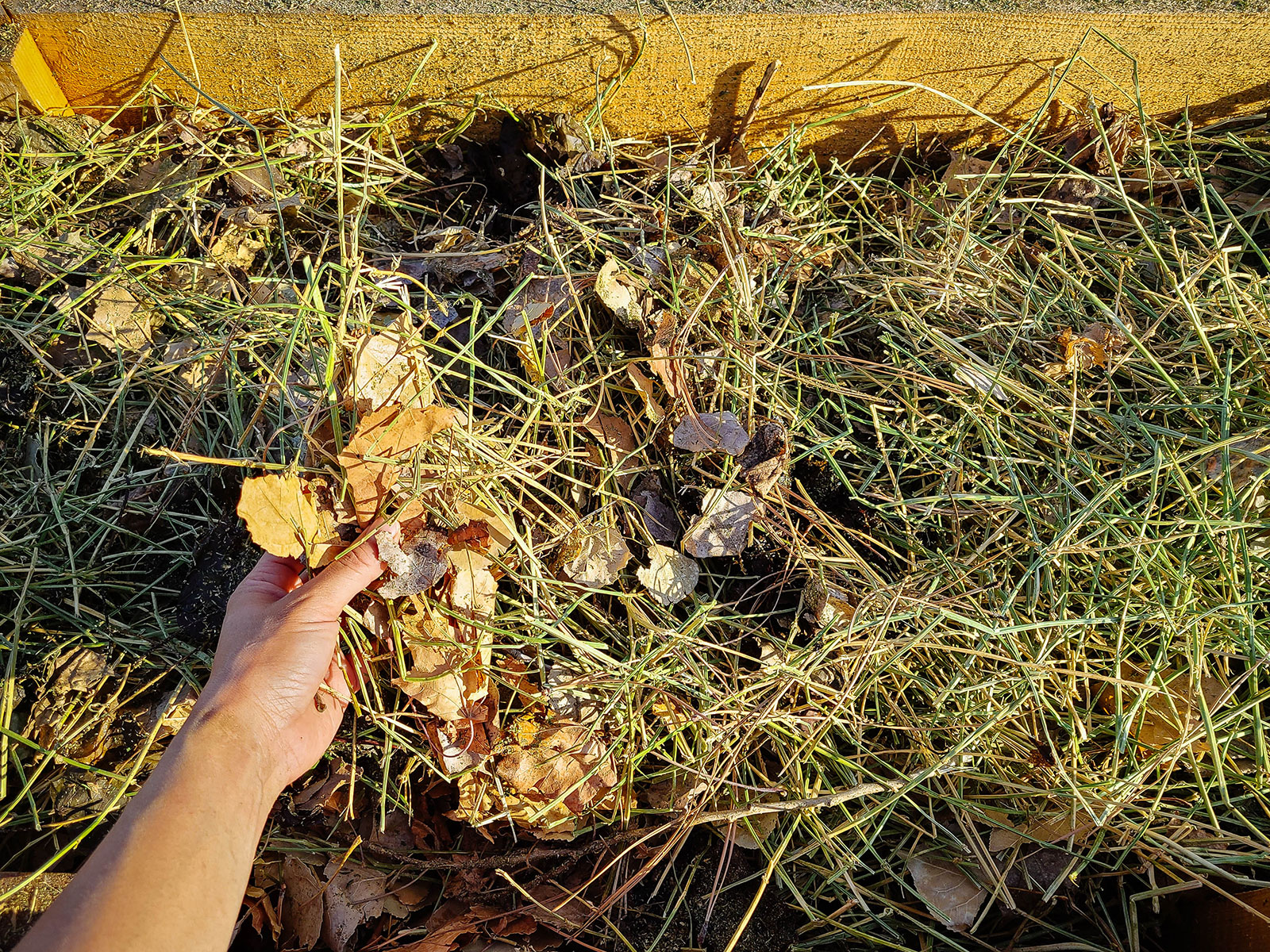
One important thing to note is if your leaves are on the larger or thicker side, such as oak or sycamore leaves, they should be shredded before you use them. These types of leaves can mat together and create a dense barrier that blocks air and water from penetrating the soil.
There are a few ways you can chop leaves into smaller pieces:
- Run a lawn mower over them with a mulching blade and rake them up.
- Run a lawn mower over them with a bag attachment.
- Gather all the leaves into a trash can and shred them with a string trimmer.
- Use a leaf mulcher (my personal recommendation).
I’ve owned this electric leaf mulcher for several years and it performs flawlessly. It’s easy to operate, easy to store in the off season, and can condense at least 10 big yard bags into just 1 bag. I use this collapsible leaf bag with it, which fits perfectly under the mulcher. (I particularly like how the top cinches shut.)
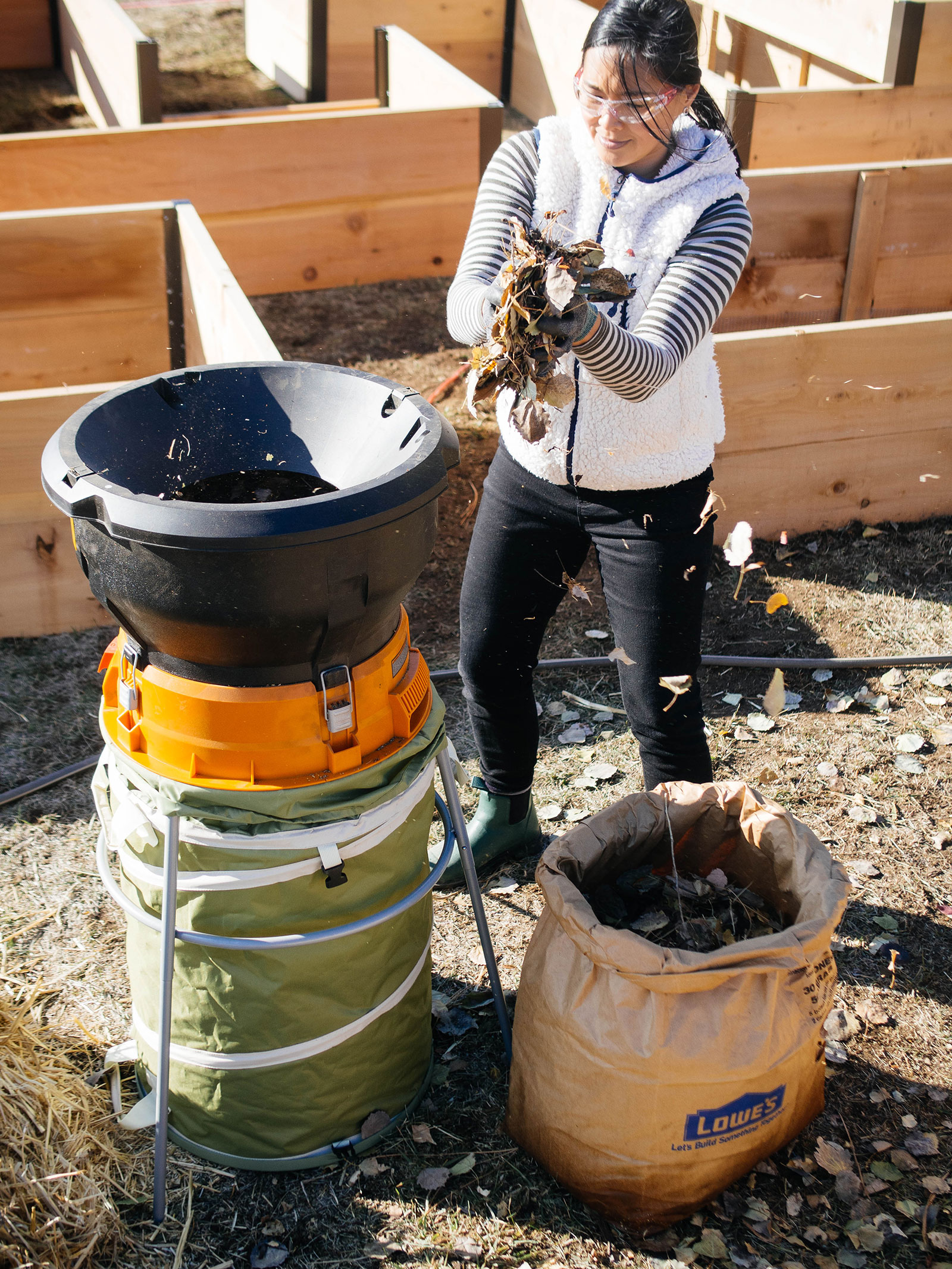

In the past I’ve also used this leaf blower that comes with a mulcher and vacuum attachment. It works well for small mounds of leaves, but can get tedious if you’re trying to tackle an entire yard full of deciduous trees.

4. Save the leaves for spring.
You can also store bagfuls of leaves to mulch your garden beds in spring or make new garden beds. Layer them in a lasagna-style bed with other organic matter to create a rich, loamy soil, or use them to bulk up beds where the soil volume has settled over winter. (Just put a layer of finished compost over the leaves so you have a smooth, fluffy medium for sowing seeds.)
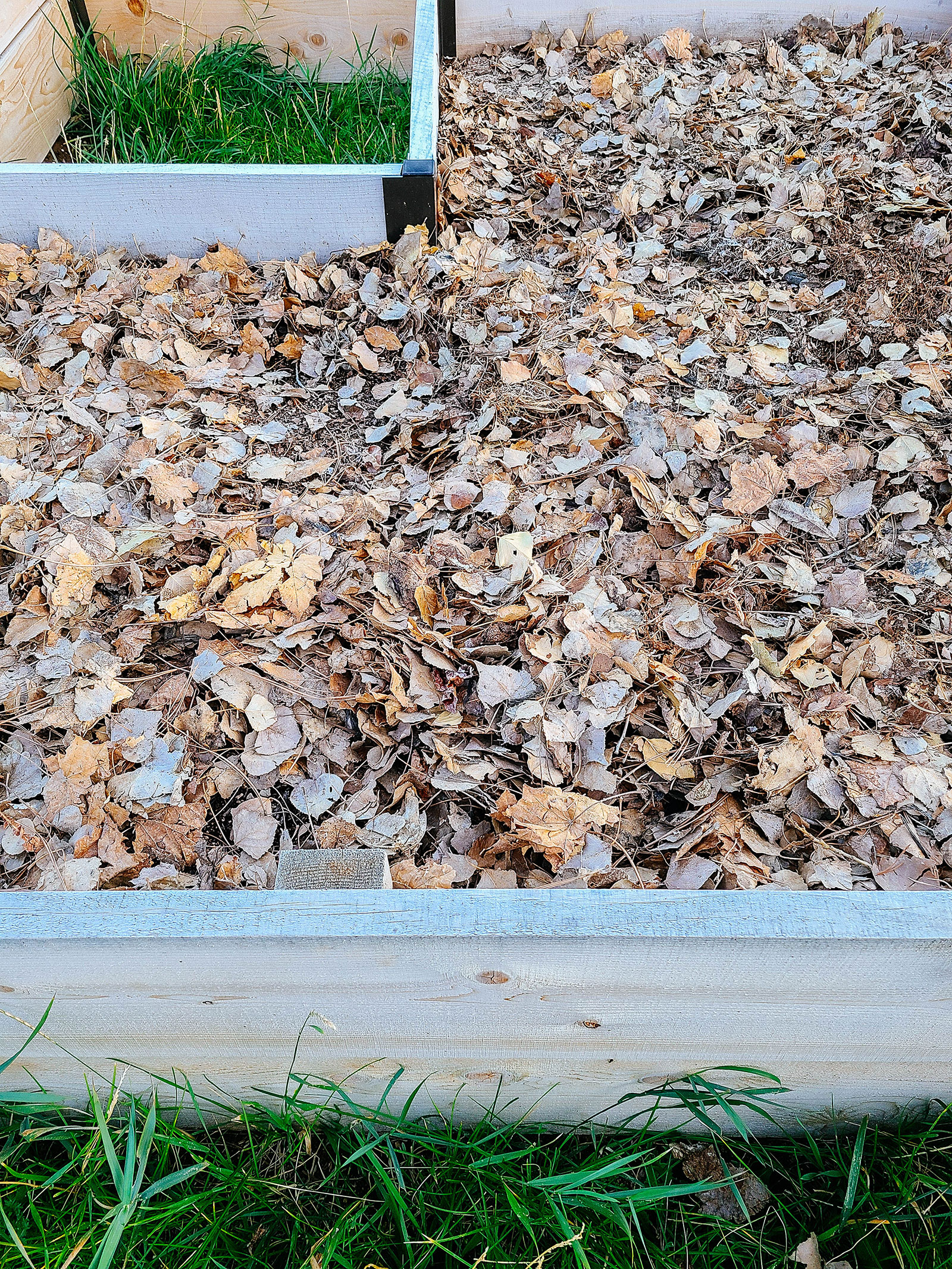
5. Make leaf mold.
Leaf mold is a fungal-driven process of decomposition that turns leaves into compost. It’s a much slower process than bacterial-driven compost (which has a nitrogen source to speed up decomposition) but it’s also largely hands-free.
If you have more leaves than you can use right away, follow my super easy method for making leaf mold in fall.
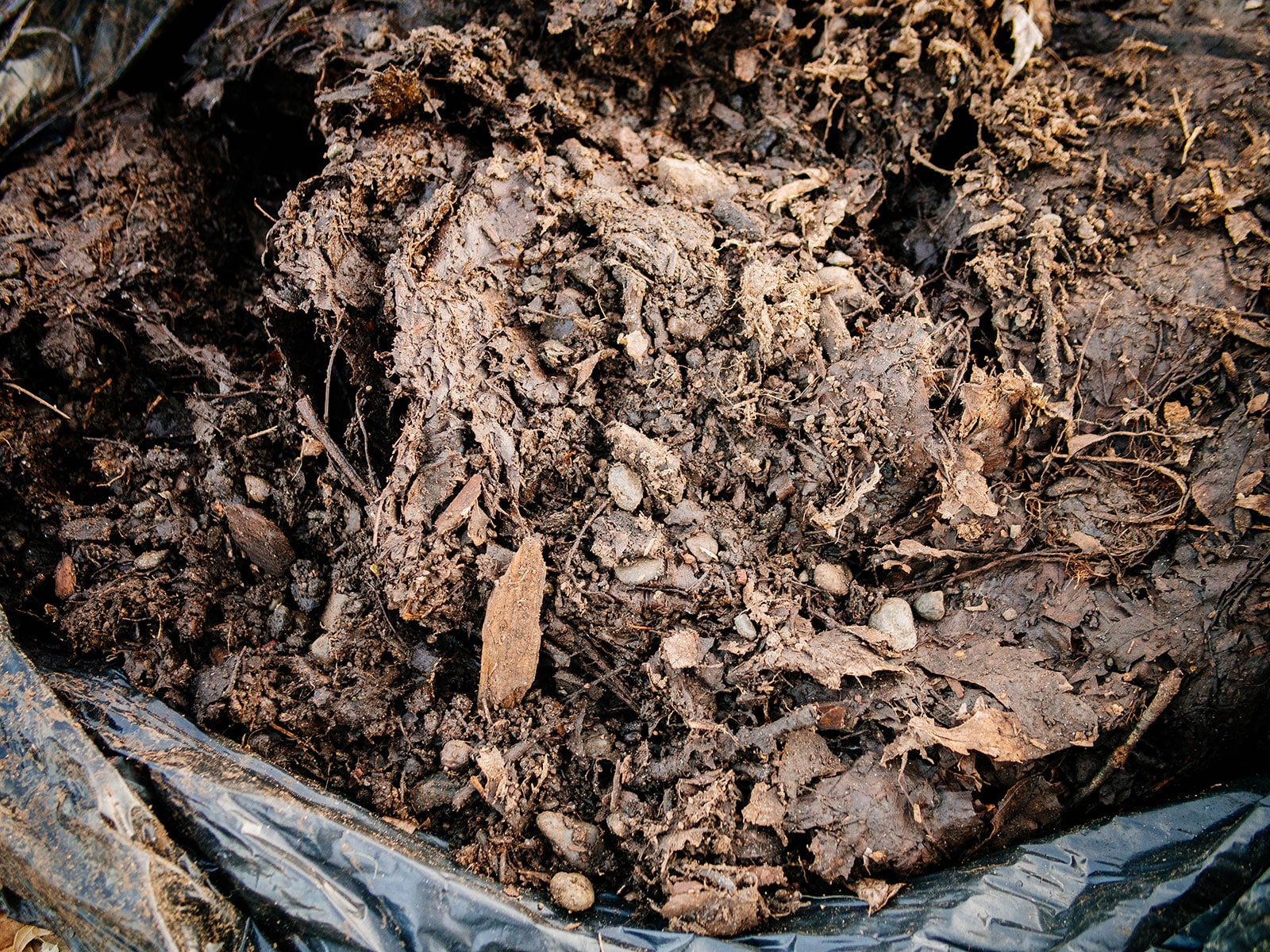
It basically goes like this: Pile all of your whole or shredded leaves into an enclosure of some sort and let them break down naturally. (The smaller the leaves, the faster they’ll break down—so it’s worth the effort to shred your leaves first if you want to make compost quicker.)
Periodically wet down the leaf pile to allow fungi to colonize; you want the leaves just lightly damp, like a wrung-out sponge.
Depending on the size of the leaves and how vigilant you are about keeping the leaf pile moist, it can take anywhere from six months to two years to make leaf mold. Use it as a mulch for vegetable beds to feed the soil.
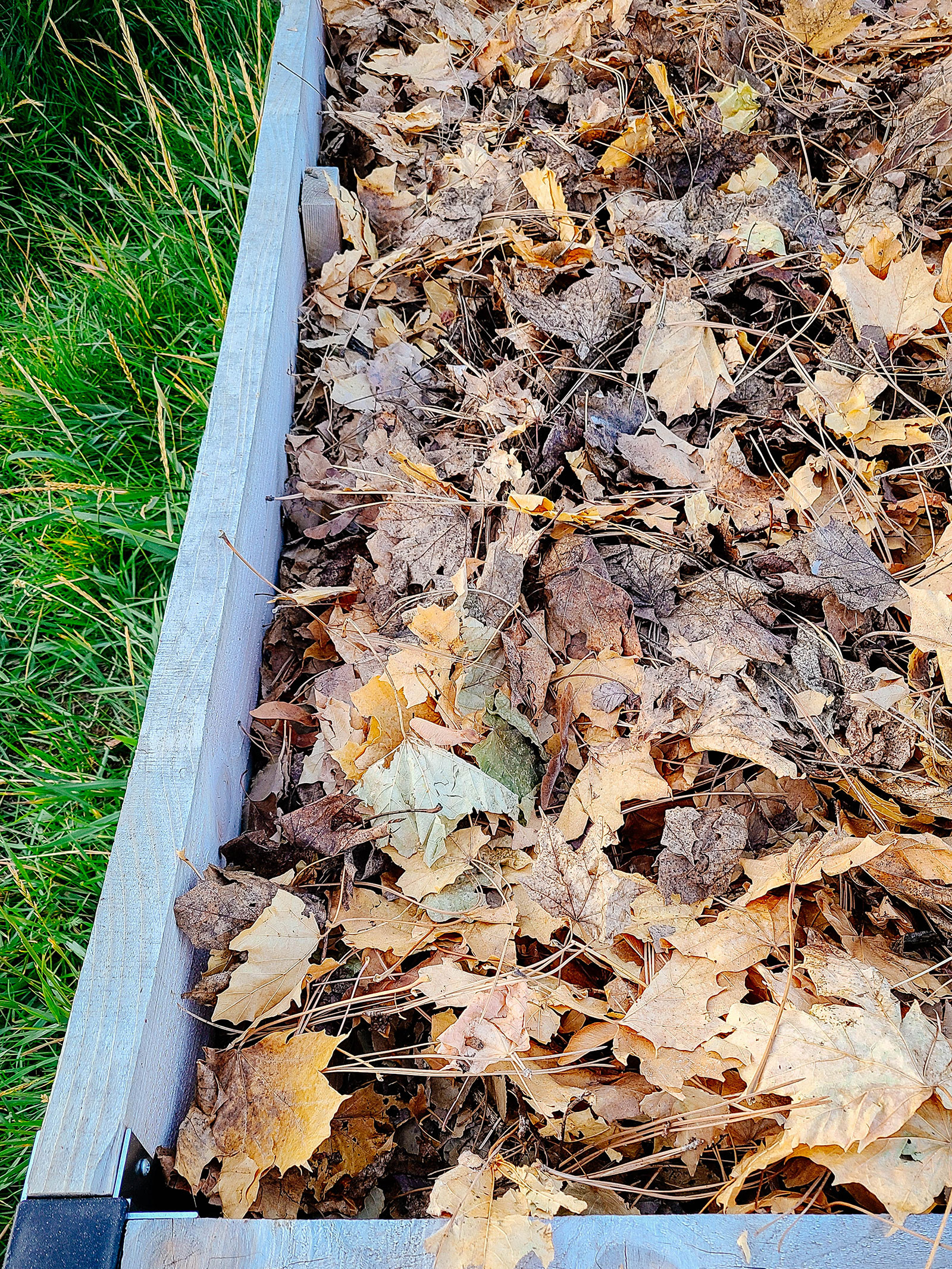



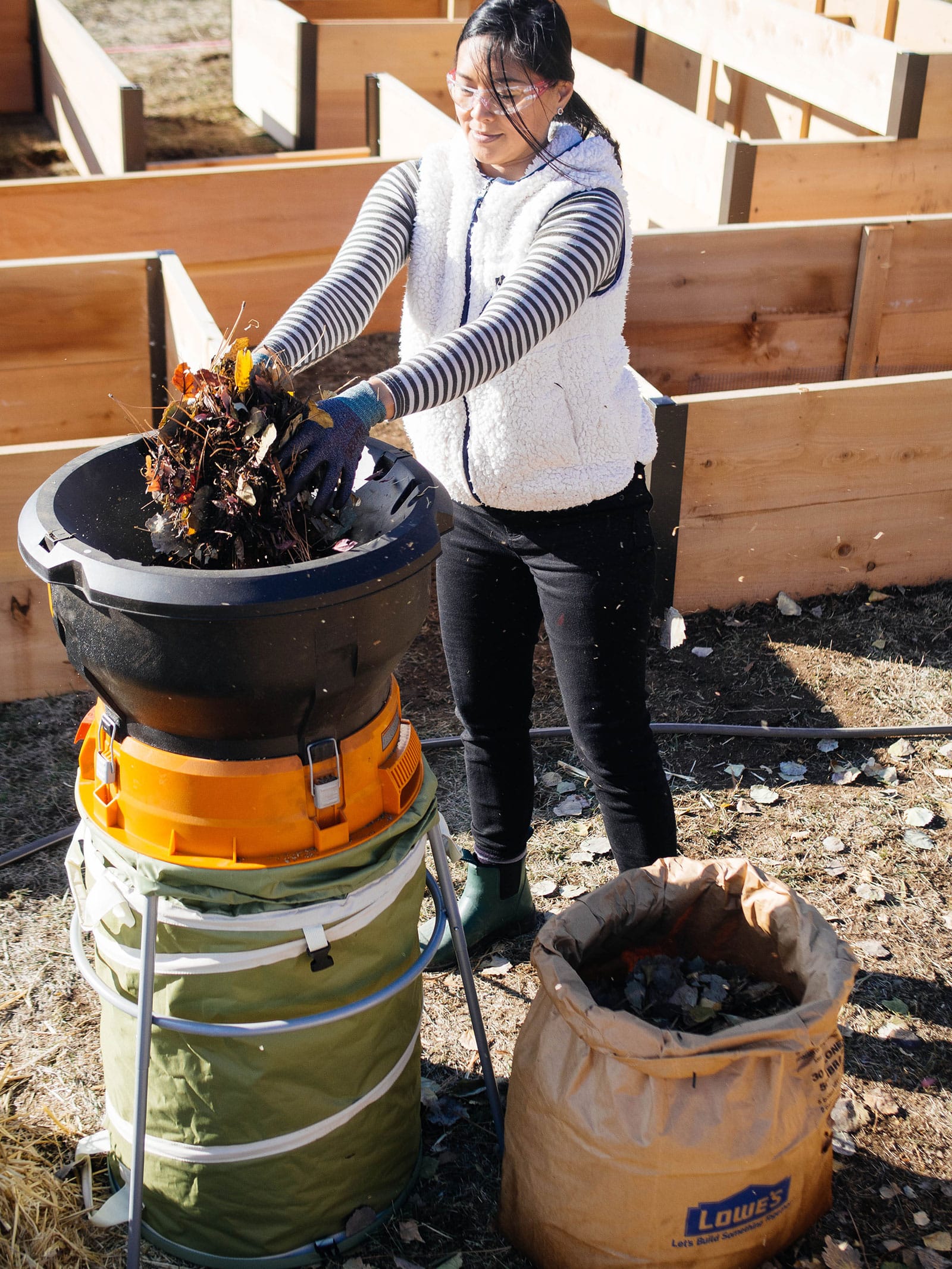













Thank you for these basic tips for using leaves.
Amen! Steve Tracey and I ran the Community Organic Gardening (COG) CETA project. Right after I finished a permaculture design course with Bill Mollison in the spring of ’81, I designed a food park on the grounds of an elder care facility in Framingham, Mass. There we discovered that the grounds maintenance guys had been depositing all the leaves from the extensive lawns in behind one of the service buildings. They had composted over the years, accumulating into a huge pile of the most glorious compost imaginable. We put it all to good use. Sometimes, folks who manage grave yards have a pile of moldering leaves behind a utility shed, at least in New England. Again, this is usually free for the taking. We also scrounged assorted used pots from such places.
SOIL AMENDMENT OFTEN AVAILABLE IN THE SOUTHEAST: Palm trees are literally weedy in this region and they are often cut or blow down in a hurricane. Once they have sat in tidy piles for a few years, they become crumbly. I found that run through my chipper/shredder, they became a soil amendment far superior to peat moss without the ecological damage attendant to peat moss strip mining. I also use the logs to support the sides of my chinampa, and included some right under the growing space which worked well. After a major hurricane, palm logs were widely available and clean up operations also created mountains of wood chips in designated areas. (Usually I had enough wood chips for my purposes by allowing the crew maintaining the electric company right of way to dump them on my property instead of having to transport them miles. They break down over time to a humus that, if anything, is even superior to leaf mould.)
we love to use leaves in our compost, but how do we keep leaves from blowing out of our raised beds over winter?
Linda, I really enjoy reading your emails over the weekends. I’m a very healthy 73 year old gardener, pepper and have lived in several very different places, including the mountains of southern Cal to the Big Island of Hawaii. I now live in the middle of Kentucky. I’m attempting to grow during all 4 seasons as much as possible and your info is helping so much. You’re doing a really good thing. Please don’t stop!!
Thank you,
Marilyn Hutson
I love hearing this! You got this Marilyn!
Great job. God bless
can I mix leaves with leftover wheat straw, that’s getting a little moldy, and till it into the garden?
Yes you can. Old rotting straw makes a great mulch.
Hi Linda Ly
I live on a busy main rd in the uk could I use the fallen leaves have no trees my self I was thinking about the passing car pollution which may affect the leaves then the mulch transferring issues to our Allottment
Thankyou
Larry Davis
Hi there! I am a beginner gardener and I really love all the practical information you share.
We have TONS of big leaf maple leaves on our Vancouver Island property. The leaves are very wet and won’t likely have time to dry out now that we’re into the rainy season. Would they still be ok to layer on top of our raised beds?
Thanks!
Danielle
Yes you can still use wet leaves over your beds, but since they’re big maple leaves, you should mix them with something else so they don’t mat together and become too dense over winter. Smaller leaves, grass clippings, and straw all work well. Or, try to be vigilant and fluff them up periodically, especially when the weather starts to warm up again.
I guess it depends on the amount and type of car pollution you’re worried about. Do those roadside leaves often get mixed with oil, pet waste, trash? If not, they would be fine to use in your garden.